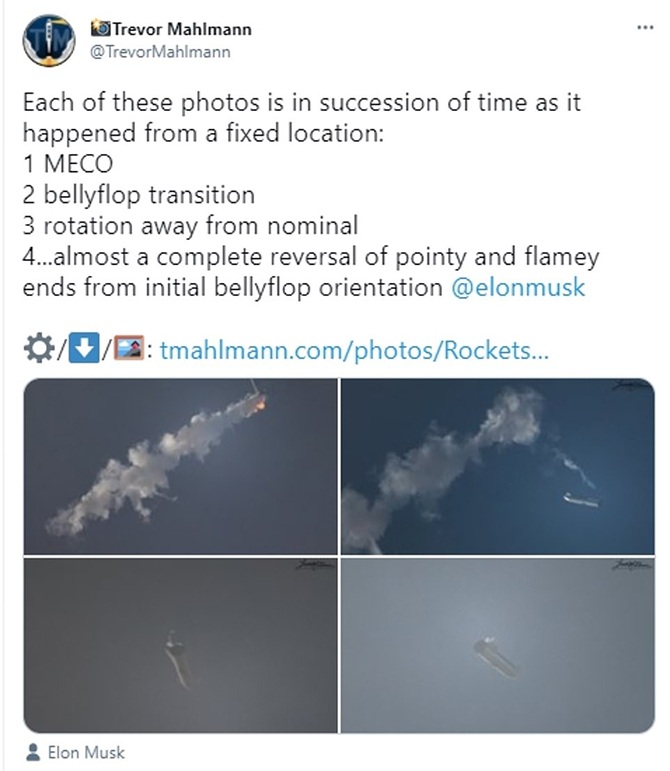In a webcast video of the rocket’s flight test, SpaceX engineer John Insprucker said, “We seem to have lost all of the data from the vehicle.” “We’ll have to figure out what happened from the team.” Not even six minutes into the test flight, the rocket’s camera froze, and thick fog in South Texas blurred images of the broken rocket. Debris was pouring down and explosions have been heard by the people of the vicinity.
“At the very least, the crater is in the correct location!” Elon Musk, the CEO of SpaceX, sent out a tweet.
This was the fourth full-scale stainless steel model to fly to a height of over 6 miles since December (10 kilometres). The previous three all blew up at or immediately after touchdown. The prototype stands at 164 feet (50 metres) in height. The Starship was one of several designs for Elon Musk’s private space company’s heavy-lift spacecraft, which would be used to fly astronauts and 100 tons of cargo on potential flights to the moon and Mars. The first interstellar Starship flight is expected for the end of the year. Musk, who is also the CEO of Tesla Inc, has reported that in 2023, he plans to launch Japanese billionaire Yusaku Maezawa around the moon in the Starship.

